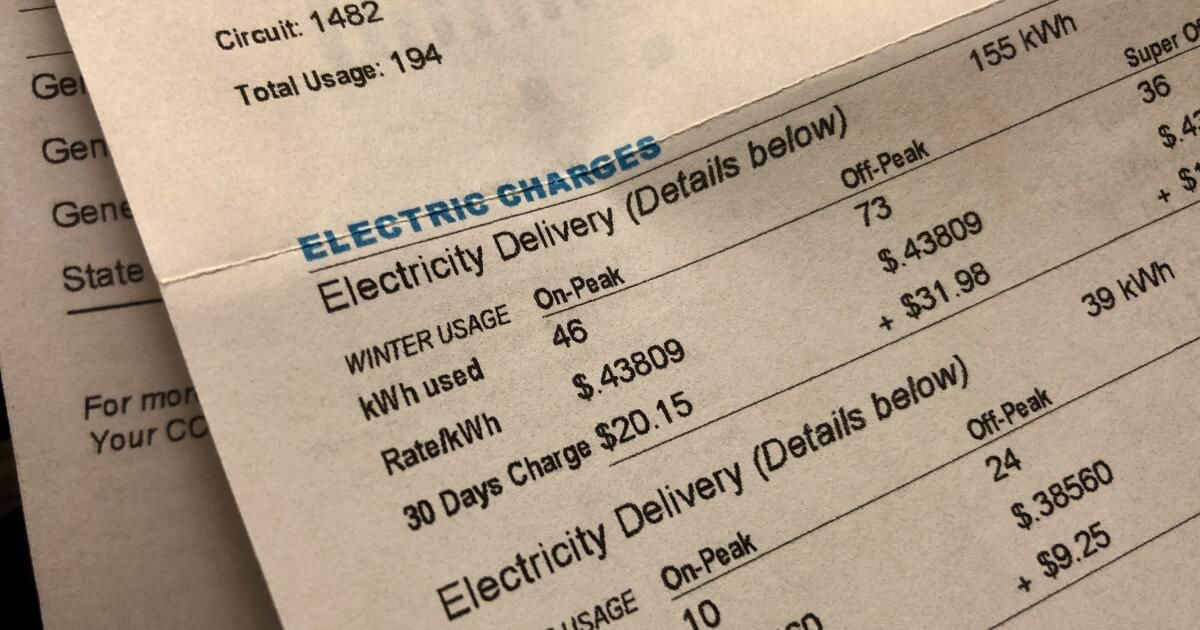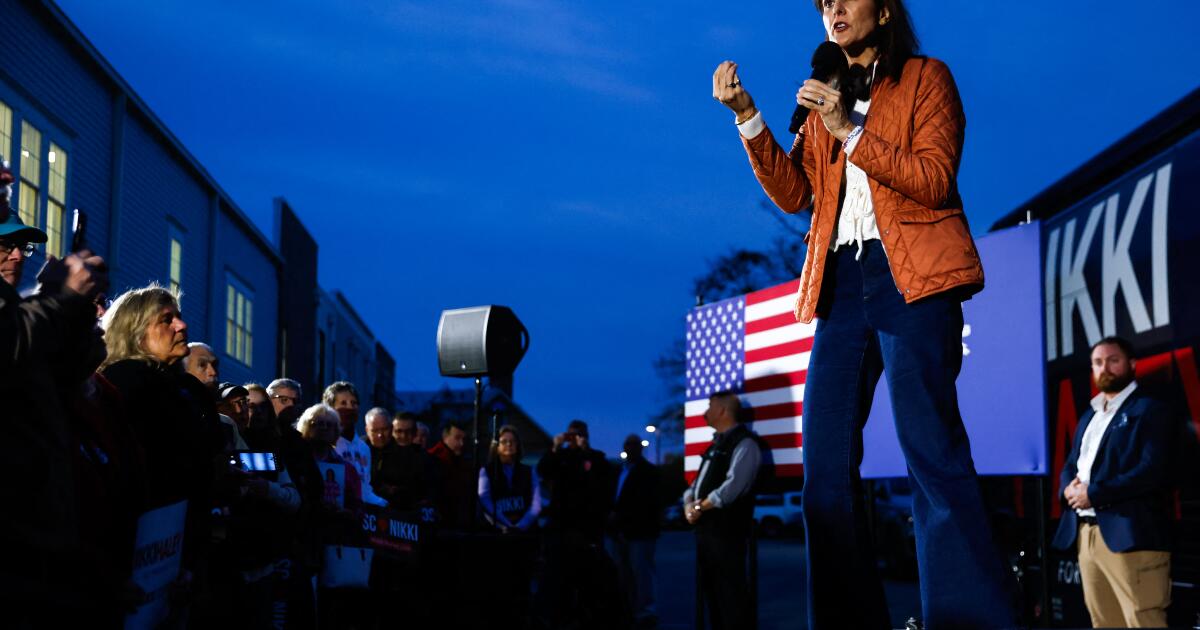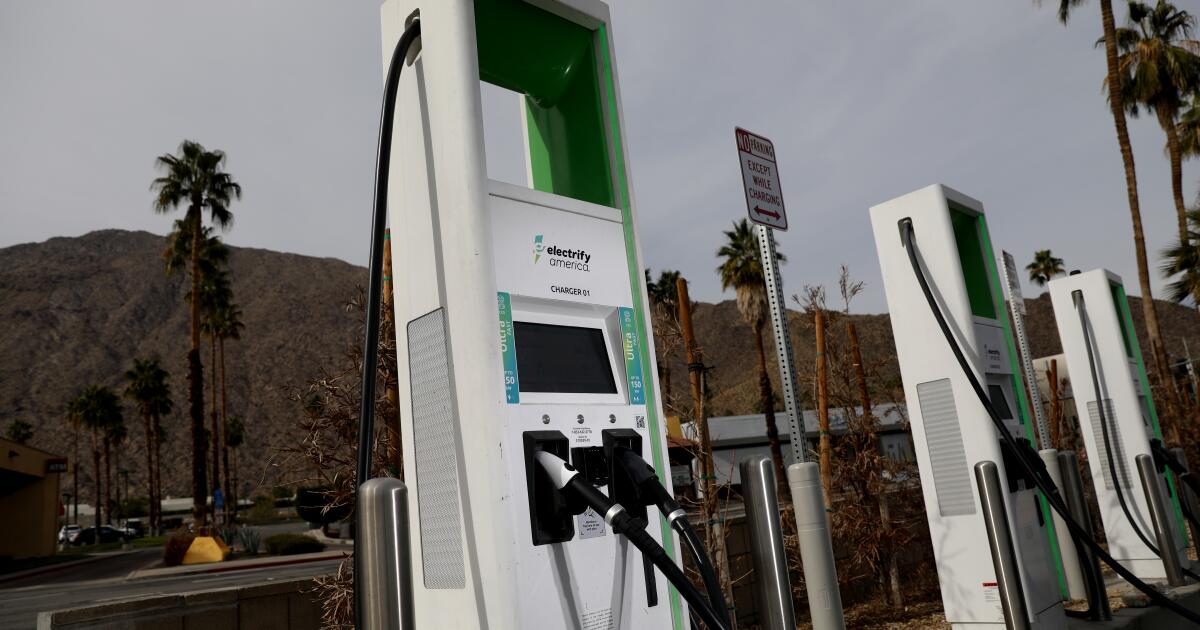You're not alone if it seems like your electric bill is going up too much.
Californians pay some of the highest electricity rates in the country. Over the past decade, households have seen their electricity rates almost double, even as their budgets are squeezed by inflation and rising temperatures due to climate change mean they have to use more energy to cool their homes.
And this is only going to get worse. State greenhouse gas reduction policies are pushing residents to adopt electric cars and appliances that will only increase their electricity consumption. Rate increases have become larger and more frequent, rising even faster than inflation for customers of the Big Three monopolistic utilities whose rates include wildfire mitigation costs, grid infrastructure projects and related payments. disasters.
In Pacific Gas & Electric territory, electricity bills have increased from $128 per month for an average residential customer in January 2020 to $226 today. Southern California Edison's bills increased from $114 to $180 per month during that same period. It's no surprise that 1 in 5 California households (and 1 in 3 low-income customers) are behind on their bills, owing an average of nearly $800.
These dramatic increases are alarming and unsustainable. This is a crisis, both for affordability and for climate action.
Much of the recent debate over electric rates has focused on the California Public Utilities Commission's May 9 decision to change the way electricity bills are charged to customers served by publicly owned utilities. investors. It's a positive step that will help pave the way for the electrification of homes and vehicles, but it will do nothing to control the amount utility companies can charge ratepayers.
Lawmakers must address rising costs next to protect cash-strapped Californians and prevent rising electric rates from undermining the state's climate goals. Here are four ideas you can use to start the discussion.
Don't make customers pay for everything
Much of what Californians are charged on their electricity bills is not for the cost of energy but for other purposes, including grid operation and maintenance, projects to reduce wildfires (power lines have caused some of the worst in the state) and energy. efficiency programs.
If investor-owned utilities were stripped of their responsibility for much of the spending not directly related to the generation and delivery of electricity, it would reduce the amount they could collect from customers and thus reduce electricity rates for everyone. One idea proposed as recently as 2022 by state Sen. Josh Becker (D-Menlo Park) is to create a state authority to publicly fund lower-cost transmission line projects.
Shifting costs away from taxpayers would require difficult decisions about which programs to cut, which to keep, and how to fund them. For example, some of the energy efficiency incentive programs, which rely heavily on conservation, may have outlived their usefulness in a state pushing electrification.
For crucial programs like wildfire mitigation and fee assistance, it's worth considering whether it would be more appropriate to fund them out of the state's general fund, through bonds, or through fees the state charges polluters through its program. cap-and-trade.
Limit on rate increases
Although rate increases requested by utility companies are decided by the state Public Utilities Commission, state lawmakers have also changed the law to allow utility companies to seek more frequent rate increases outside of the normal review process. request for three-year rates to respond to rising costs due to wildfires. and other climate disasters. That's one of the reasons the PUC approved more than a dozen rate increases for PG&E and Edison since 2020.
But less frequent and more comprehensive rate increase procedures, which are more scrutinized and comprehensively considered by regulators, would likely be better for customers by allowing overworked taxpayer watchdogs to have more opportunities to challenge increases and reduce them.
Another idea worth considering is to limit the percentage of their income that households can spend on paying for utilities. A proposal in New York would have capped utility bills on low- and moderate-income households at 6% of their income, above which customers are considered to have high energy burdens.
Ratepayer advocates in California have floated the idea of legislation that would prohibit utility companies from raising their rates faster than inflation. The taxpayer advocacy group Utility Reform Network has suggested tying a cap on rate increases to the Social Security Administration's annual cost-of-living adjustment, which in 2023 was 8.7%.
Cut spending on public services
Investor-owned utilities are spending heavily to prevent their equipment from starting wildfires and to build and upgrade power lines, substations and transformers needed to handle the electrification of vehicles and buildings. But they have little incentive to be frugal because they can pass the cost onto taxpayers while still making a healthy profit. Tighter restrictions on spending on public services may force them to stop treating taxpayers like an unlimited credit card.
There is legislation pending in Sacramento that would force utility companies to use the quickest and most cost-effective wildfire mitigation methods, such as insulating wires and controlling vegetation, instead of more expensive options, such as burying power lines, and would require some overspending on public services to be reduced. covered by shareholders rather than customers.
Another factor driving rising electricity bills is shareholder returns. The money that investor-owned utilities collect from customers fuels their profits, including the $2.2 billion that PG&E reportedly collected last year, a 25% increase from the previous year. Lower limits on the returns that shareholders are allowed to channel would reduce costs for clients.
Consider a public acquisition
Customers of utilities like the Los Angeles Department of Water and Power pay lower electric rates largely because profit margin is not part of the equation. Gov. Gavin Newsom threatened to take over troubled PG&E during his latest bankruptcy if it didn't become a more responsible utility. In the end, the governor reached an oversight agreement. But a public takeover is still worth exploring to protect Californians from unaffordable rates.
Reforms to the Public Utilities Commission, which critics accuse of being too friendly to utilities and failing to protect consumers, should also be debated. Could the PUC be more responsive if some of its many other responsibilities (including trains, autonomous vehicles, and internet service) were transferred to other agencies, or if it included voting members who were not appointed by the governor?
There are likely many other valuable ideas for addressing electricity rates. It's time to start discussing them seriously, before the affordability crisis turns into a taxpayer revolt.












